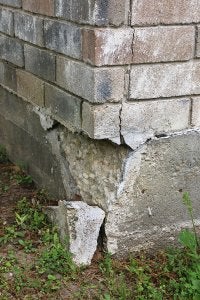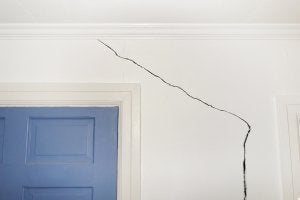-
Find the Steps for Basement Waterproofing

 The last thing any homeowner wants is to find puddles in the basement, which is why waterproofing near San Antonio is so important. Interior and exterior basement waterproofing can help you avoid the dangers of water damage, mold growth, and poor indoor air quality in your home. To determine what type of waterproofing is best for the situation, however, it is first necessary to identify the source of the problem. Continue on if you would like to learn about the steps of basement waterproofing.
The last thing any homeowner wants is to find puddles in the basement, which is why waterproofing near San Antonio is so important. Interior and exterior basement waterproofing can help you avoid the dangers of water damage, mold growth, and poor indoor air quality in your home. To determine what type of waterproofing is best for the situation, however, it is first necessary to identify the source of the problem. Continue on if you would like to learn about the steps of basement waterproofing.Drainage Problems
A fully prepared homeowner will have a proper drainage system in place in order to prevent water from pooling around the foundation of the home. Unfortunately, there are a few problems that may arise regarding these drainage systems if they are not maintained. Clogged gutters can lead water to overflow into the backfill, or the gutter may not extend past the backfill in the first place. If water is allowed to run or pool alongside your house rather than draining away from your foundation, it may seep into your home. It is particularly important to keep up on your drainage maintenance during the fall and winter months when leaves and snow are more likely to interfere with your drainage processes.
Groundwater
In addition to drainage problems, you may experience water in your basement due to backfill saturation. This occurs because the soil that lies between your foundation and the natural earth is looser and more prone to absorbing water. As more and more water makes its way into this loose soil, more pressure is put on your foundation, and eventually, water seeps through the concrete. Your waterproofing company can address this problem by installing a drainage system inside your basement. In this case, water will enter the basement, but it will be removed before it can cause damage.
-
Foundation Waterproofing Tips for Residence in San Antonio, TX
Moisture that seeps in through your foundation can cause all kinds of problems, so it is best to eliminate them with waterproofing near San Antonio. Using both interior and exterior basement waterproofing techniques, you can make sure you keep your foundation dry. Watch this video clip for tips for waterproofing a foundation.
A wet basement can lead to serious problems like water damage and mold growth, which can impair the structural integrity of your home and cause health problems. Fortunately, you can use waterproofing to keep moisture out of the basement and avoid these issues. In some cases, the best idea may be to modify the drainage. You can keep the water away from the foundation of your home by redirecting it using a downspout and an extension. You can also use interior basement waterproofing products that you can apply directly to the inside of the foundation in order to seal moisture out.
-
A Look at How Foundation Repair Works
 Replacing the foundation of your home can cost a fortune, so before you make the decision to do it, you should look into your foundation repair options. You can obtain foundation repair serving San Antonio for just a fraction of the cost of a total foundation replacement, and it will make your foundation strong and level again. How exactly does it work? Here are the steps that are taken when a foundation company uses piers to raise and support your existing foundation.
Replacing the foundation of your home can cost a fortune, so before you make the decision to do it, you should look into your foundation repair options. You can obtain foundation repair serving San Antonio for just a fraction of the cost of a total foundation replacement, and it will make your foundation strong and level again. How exactly does it work? Here are the steps that are taken when a foundation company uses piers to raise and support your existing foundation.Excavation of Soil
Before anything is done, a contractor will assess the property, mark off any gas lines surrounding the home, and
 then indicate where the piers will be placed to fix the foundation. The soil in those areas will then be excavated in order to give the contractor access to the foundation. Once the soil is removed, the contractor will also chip the foundation and make it smooth so that support brackets can be installed.
then indicate where the piers will be placed to fix the foundation. The soil in those areas will then be excavated in order to give the contractor access to the foundation. Once the soil is removed, the contractor will also chip the foundation and make it smooth so that support brackets can be installed.Installation of Brackets and Hydraulics
When the excavation is finished, it’s time for the contractor to drill the piers down to the desired depth and install the support brackets that go on them as well as the hydraulics. Each of these must be installed properly before moving on to the next step to ensure that the home is raised the right way.
Raising of the Home
Once the piers, support brackets, and hydraulics are in place, the hydraulics can be used sequentially in order to raise the home to the desired height. The contractor will make sure that the home is level throughout the process. Fastening plates and support brackets will then be permanently attached to the piers, and the contractor will record the depth of each pier as well as the pressure and elevation readings for each of them.
Finishing Touches
After the foundation repair is complete, it’s time to replace the soil that was excavated and take care of any landscaping that needs to be done to make the exterior of the raised home look great again.
RECENT POSTS
categories
- Uncategorized
- Foundation Repair San Antonio
- Cracked Foundation
- Foundation Information
- Foundation Repair
- Contractors
- Drainage Maintenance
- drainage correction professionals
- Foundation Cracks
- waterproofing services
- home foundations
- Drainage Correction services
- Sagging Lintels
- Lintel Repair
- Drooping Lintels
- [INFOGRAPHIC]
- Drain Installation
- Foundation Damage
- Poor Water Drainage
- Concrete flatwork installation
